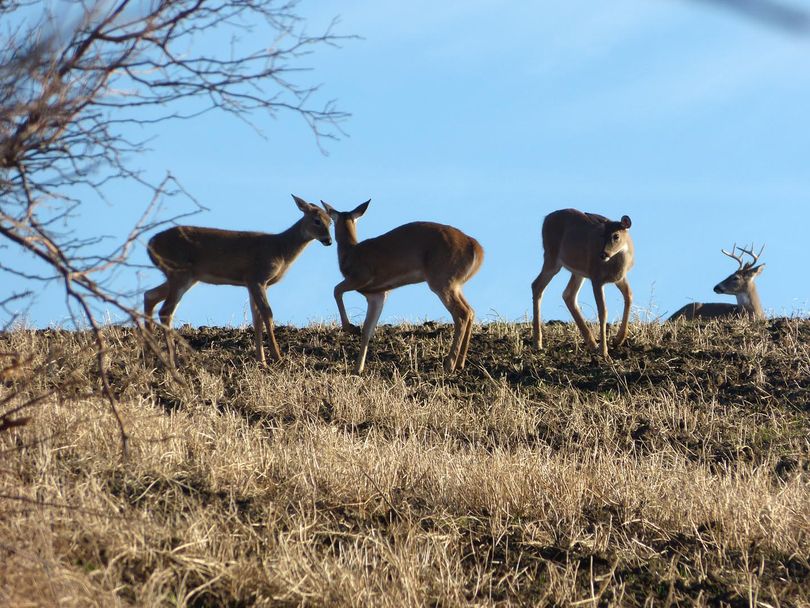Drought-related bluetongue outbreak killing area deer

WILDLIFE -- White-tailed deer in the Spokane region are dying, perhaps by the hundreds, in an outbreak of a drought-related viral disease called bluetongue, Washington wildlife officials say.
As of Monday, Department of Fish and Wildlife biologists in Spokane had compiled 50 reports of more than 100 deer that were dead or sick, said Kevin Robinette, regional wildlife manager.
Additional reports are coming in from Lincoln County and southern areas of Stevens and Pend Oreille Counties, he said.
White-tailed deer are most vulnerable to the disease, which is transmitted by gnats, especially in dry conditions when the deer are concentrated near waterholes and mud. Bluetongue, as well as the similar epizootic hemorrhagic disease (EHD) rarely affect other species found in this region.
Hemorrhagic disease outbreaks have killed small to large numbers of deer in portions of Eastern Washington, Idaho and Montana in past years marked by dry summers. Clearwater region whitetails in the Kamiah area required years to rebuild populations after a 2003 EHD outbreak.
"We appear to be in the middle of a bluetongue outbreak in the Spokane region just at the time we felt our whitetails had rebounded enough to expand either-sex deer hunting (for youth and senior hunters)," Robinette said.
"Significant precipitation or the first killing frost usually brings an end to these die-offs."
Deer in the early stages of hemorrhagic disease may appear lethargic, disoriented, lame, or unresponsive to the presence of humans, he said. Although the incubation periods is 5- to 10 days, once the disease take hold, the deer can die, often salivating excessively, within a few days.
Humans are not affected by these viruses, according to Fish and Wildlife officials. However, the agency's website recommends that hunters avoid shooting and consuming animals that are obviously sick.